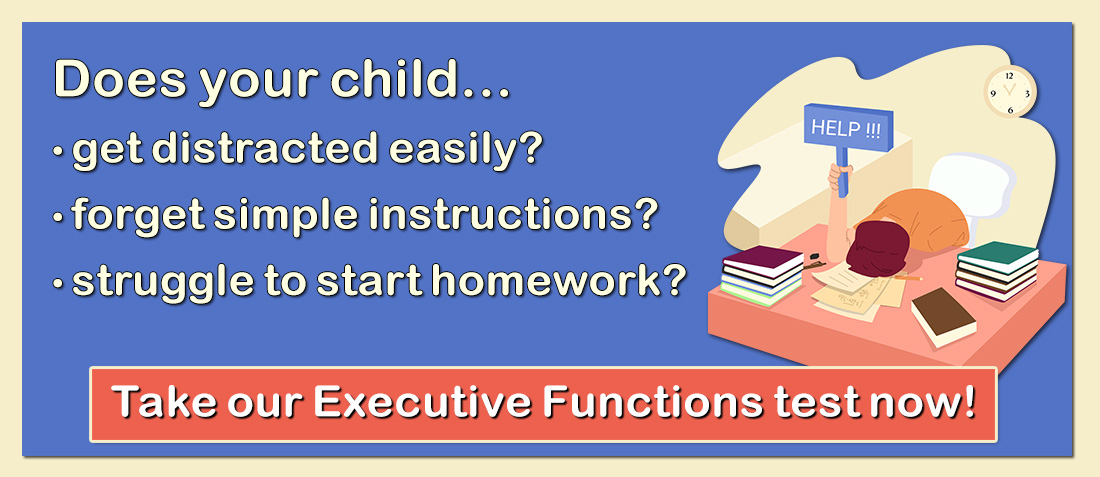
Photo Credit: Philippe Put
Nonverbal Learning Disorder (NLD) is an “unofficial” diagnosis that reflects an underlying neurological condition expressed through a set of verbal strengths and nonverbal weaknesses. Children with NLD display a group of symptoms that includes excellent word knowledge but atypical social behaviors and visual or motor difficulties.
Many children with Nonverbal Learning Disorders are gifted in the area of verbal skills. They tend to be excellent readers, have an extensive vocabulary, and are often very articulate in describing what they are thinking. These children frequently have a great capacity for memorizing facts. As younger children, they are often seen as being extremely knowledgeable and tend to be strong learners. Interestingly, they may be great “word” readers, but struggle with complex reading comprehension.
Some odd and atypical issues may be identified even in younger children. These youngsters sometimes display difficulty in nonverbal areas, including problems picking up on nonverbal communication. They tend to be very concrete and literal in how they see things. While they may have an excellent vocabulary, they may also have difficulty in understanding jokes, humor, and idioms, and in following more complex communications. This frequently results in difficulty with understanding interpersonal relationships and problems in friendships.
Youngsters with Nonverbal Learning Disabilities are also frequently slow in gross-motor development and tend to be somewhat clumsy, often bumping into other people and objects. Visuomotor deficits — problems in processing and remembering visual images, which can cause difficulty in remembering geometric forms — are also frequently seen in young children with NLD. These children may also have fine-motor concerns that can be associated with these visuomotor impairments. Problems with handwriting, drawing, and other writing tasks are often a concern. Youngsters with NLD may write very slowly and have problems with copying.
Many of these children begin to display emotional concerns as they get older. Signs of anxiety and oppositionalism are frequently seen in teenagers with Nonverbal Learning Disabilities. They tend to want to please others and become anxious when they do not do what is expected of them. They often do not understand how their behaviors are bothersome to others and display self-esteem concerns and a sense of being disconnected from their peers.
Academic concerns can also be seen with many of these children as they get older. While children with Nonverbal Learning Disabilities initially display excellent vocabulary and reading skills, they often do better at reading words than at understanding content. Problems in comprehending deeper meanings in written language are also common. Interestingly, many of these youngsters also experience difficulty in the area of complex mathematics.
The children who are most frequently identified by parents and teachers with NLD are described as being odd and atypical in their communication and in their interactions with other children. Cognitive testing often indicates strong verbal, as opposed to nonverbal, abilities.
Basic characteristics of a Nonverbal Learning Disability include:
- pronounced difficulty in gross- and fine- motor skills
- deficits in social skills (i.e. understanding social cues such as gestures, facial expressions, physical proximity)
- challenges in organizing visual and spatial material
- a tendency to become easily overwhelmed
- understanding on a very literal basis
- asking many questions for clarification
- difficulty with fine- and gross-motor concerns
Recommendations
1. Consult with a psychologist to evaluate issues such as:
- verbal vs. non verbal intelligence
- social intelligence
- educational strengths and weaknesses
- visual perceptual skills
2. Consult with an occupational therapist who is able to evaluate children with NLD if you notice fine- and- gross motor concerns such as:
- difficulty with handwriting
- problems holding onto and releasing small objects such as toys
- lack of hand-eye coordination that may impact academic tasks, such as copying from a blackboard or physical activities like catching a ball or hitting a target
- absence of peer interaction or ongoing difficulty in social situations
- stress-related physical symptoms and/or signs of anxiety or panic
Some children with NLD qualify for occupational therapy (OT) services within the school setting.
3. Have your child see an ophthalmologist to assess any problems with vision that might need to be corrected.
4. Teach strategies to deal with new situations and apply previously-learned skills to new situations. For example, let children practice sleepovers with peers by having them spend the night at a relative’s home. The successful experience of being away for a night, expressing needs and desires to others, and interpreting social cues displayed by others could then be drawn upon in future situations. Gradually introduce new learning experiences, offering a verbal explanation of all the components of the lesson.
5. Provide direct training in planning, organization, studying, and written expression. Be explicit in defining expectations for a writing project. For example, estimate the time needed, help the child come up with an outline, and develop a plan required to complete the project. Allow the child to use assisting technology (e.g., graph paper, tape recorder, computer) in the classroom.
6. Pair children with a buddy during free time to show them effective behaviors to use when relating with peers. Discuss possible ways to arrange this with the child’s teacher so that a child with good social skills can provide this support in the school environment. They may come up with cues to indicate behaviors such as standing too close to another person or monopolizing the conversation with another child.
7. Arrange for children to participate in a social skills group at their school. Alternately, look for small group activities such as a science club, after-school homework program, or book club where there is close monitoring of the children.
8. Because children with NLD tend to be very verbal, teach them how to use self-talk strategies. Ask them to repeat directions or other important information to reinforce the ideas presented and to talk themselves through all the steps of a task. Identify the source of any misunderstanding and model various ways to interpret situations.
9. Teach children how to respond in a social situation by describing the situation and providing specific scripts to follow. Offer visual depictions by creating comic-strip cartoons that freeze a scene in social situations and rework it to a more satisfying ending. Show youngsters video clips of a few types of behavior that you would like them to demonstrate.
10. Use imitation and role modeling paired with reinforcements such as praise and rewards. Rewards for displaying appropriate behavior could include special attention, praise, a short break, or a favorite activity.
11. Social stories can help to prepare children for upcoming social situations or transitions. Write a brief story in which the child is the main character. In the story, describe what will happen to the main character and what the expectations are during the upcoming social situation or transition.
12. Children’s video game-play can be used as an opportunity for improving their perspective-taking abilities. Ask children to teach you how to play a game that they particularly enjoy. It is often best to let them teach you without interruption and then later to go back and have them show you again. Give them feedback each step of the way about how they are informing you and understanding your lack of knowledge.
13. Massive multi-player online games (MMORPGs) can be a useful tool to help improve your child’s communication skills. Be sure to include personal or face-to-face interactions, as well as online interactions. This can be done by joining the game and participating with the child in the game-based activities. You could also allow children to play these games if, and only if, they play with a peer or a classmate they know outside of the game.
*Use MMORPGs cautiously with children who have Nonverbal Learning Disorders. These children can become fixated on these games due to the high levels of engagement, the opportunity for less personal interaction with others, and the complexities of the games. Children who are not prone to becoming overly-involved in this type of isolating video game-play may find it to be a useful tool.
14. Other digital technologies and video games can serve as a gateway to improving communication skills for children with NDL. For example, text messaging could be an easier way of communicating for a child who has NDL or who may feel anxious in social situations. Again, the key for parents is to encourage children to go beyond texting, instant messaging, or e-mailing to have face-to-face interactive opportunities with their peers.
Websites
LearningWorks for Kids: The premier site for executive function information, this site provides a wealth of up-to-date tips and recommendations for children with all types of disorders and disabilities.
Nonverbal Language Disorders Association : This site features a very good resource section that includes a list of books, articles, and websites that may be helpful for people with NLD.
Nonverbal Learning Disorders vs. Asperger’s Syndrome : This site offers articles that address the differences between AS and NLD.
LDOnline: This site discusses developing an educational plan for students with NLD; however, many of the strategies provided can also be used at home.
NLDLine: This site offers a wealth of information regarding NLD such as general information, current articles, information packets, and assessments.
Books
Godwin, P., & Anderson, L. M. (2005). Understanding Sensory Dysfunction: Learning, Development, and Sensory Dysfunction in Autism Spectrum Disorders, ADHD, Learning Disabilities, and Bipolar Disorder. London: Jessica Kingsley Publishing.
Kutscher, M.L. (2005). Kids in the Syndrome Mix of ADHD, LD, Asperger’s, Tourette’s, Bipolar, and More! The One Stop Guide for Parents, Teachers, and Other Professionals. London: Jessica Kingsley Publishing.
Stewart, K. (2007). Helping a Child with Nonverbal Learning Disorder or Asperger’s Disorder. Oakland, CA: New Harbinger Publications.
Tanguay, P. (2001). Nonverbal Learning Disabilities at Home: A Parent’s Guide. London: Jessica Kingsley Publishing.
Thompson, S. (1997). The Source for Nonverbal Learning Disorders. East Moline, IL: LinguiSystems.
Whitney, R. V. (2002) Bridging the Gap: Raising a Child with Nonverbal Learning Disorder. New York, NY: Penguin Group.
Receive online class information and helpful tips from Dr. Randy Kulman's LearningWorks for Kids |



